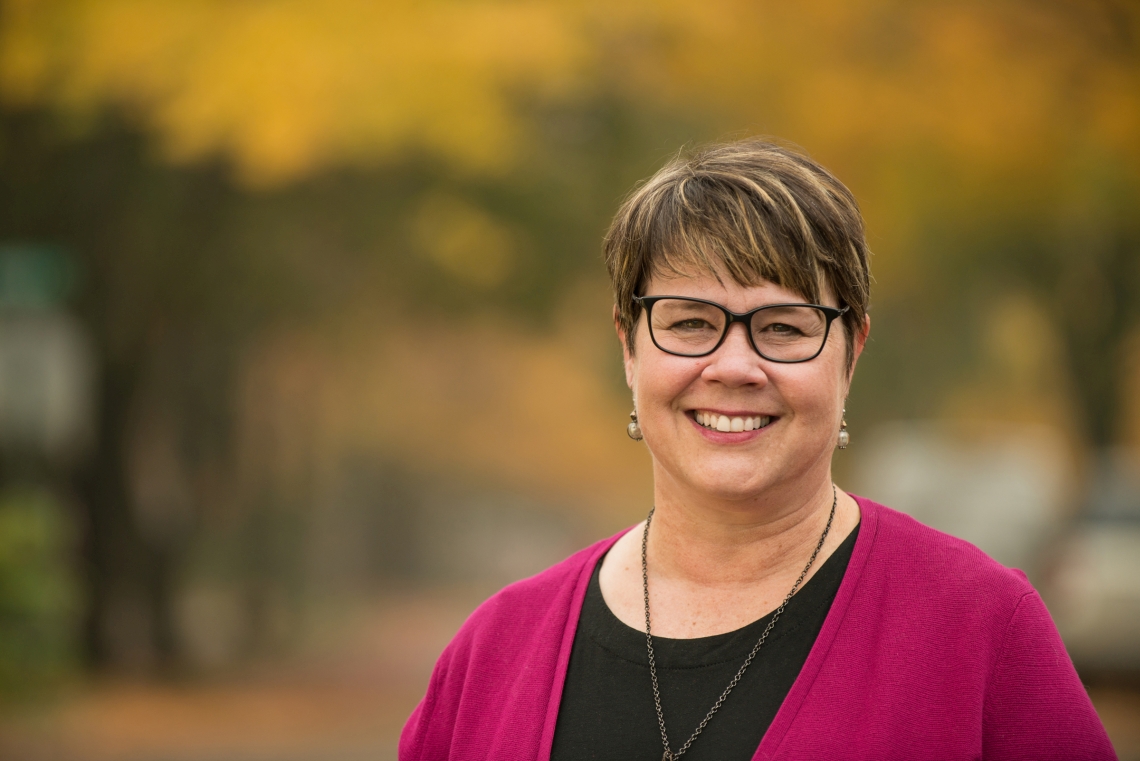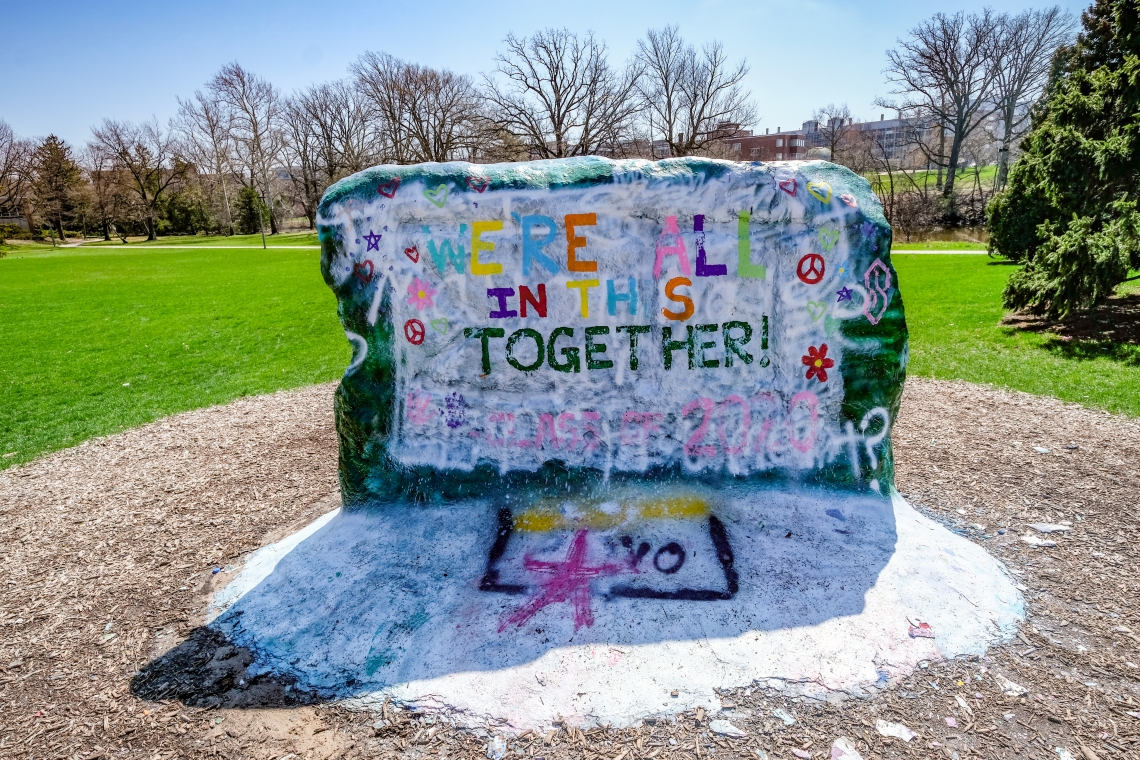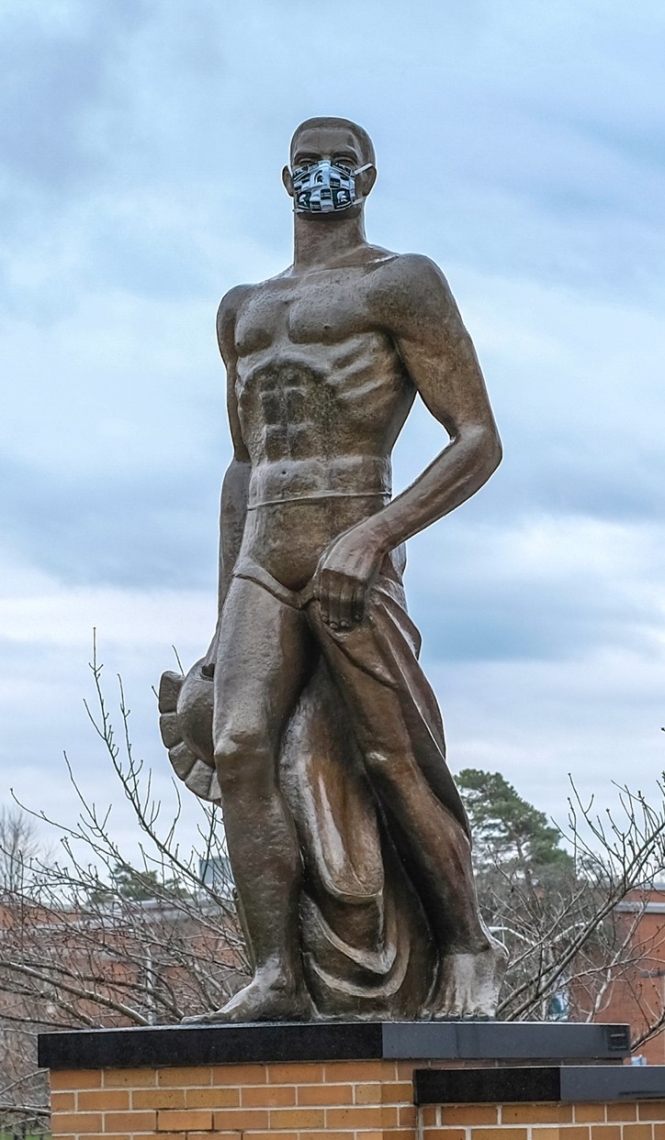University-Community Partnerships in a Pandemic: Connecting, Understanding, Responding

Laurie Van Egeren, Interim Associate Provost for University Outreach and Engagement
Recently, I went to a gas station to fill up my car for the first time since May 2020. It didn't go smoothly. I wasn't sure what side the gas tank was on. I forgot to push the button to open the gas tank cover before getting out. I was confused as to how to insert the credit card, what buttons to press, which kind of gas to get. I didn't use the squeegees to clean the windows, thinking the only option was to wash the whole car. In short, after nine months of not doing this simple, automatic, everyday activity, I was out of practice.
And it occurred to me that this is what it will be like to return to the post-COVID world. We will be out of practice.
In March 2020, MSU shuttered all but critical on-site operations and asked faculty, staff, and students to work and study remotely. One year later, our lives have been transformed in ways that could not have been anticipated last March. Universities as large and complex as MSU are like enormous ships with all the mass and momentum that propels them inexorably forward. Small, specific changes can be made with relative ease—for example, innovations in programs, courses, research—but the notion that the entire ship could be turned was unimaginable.
And yet, the ship was turned, and turned without capsizing. MSU never stopped pursuing its mission, even for a day, as the crisis broke over the world. Instead it transformed how it served its 49,695 students, delivered 6,000 courses, and conducted groundbreaking research. In the process, MSU has discovered unexpected opportunities to serve the state and beyond.
Responding as a Community During the Pandemic

Students paint the rock on campus with messages of unity.
But MSU is not only known for its stellar educational experiences and groundbreaking research. It is part of a vast community—in fact, hundreds of deeply connected communities that span Michigan and cross the world. Through the tireless efforts and unique knowledge each community brings to its collaborations with MSU faculty, staff, and students, millions are touched each year by the engaged scholarship—engaged research, engaged creative activities, engaged teaching, and engaged service—for which MSU is renowned. Every one of these communities was damaged by the pandemic, and many continue to experience grief and trauma from the human, economic, and environmental loss.
While the majority of MSU faculty and staff were able to work at home for an extended time, a great many people in our partner communities were not, and the hundreds of faculty and staff who worked directly with those communities were deeply concerned about the stress and trauma within them.
To coordinate its pandemic response, MSU organized a university-wide team with subcommittees responsible for a wide range of areas, including: COVID testing, communications, teaching and learning, transportation issues, residential living, contact tracing, equity and inclusion in response, and more. And unique to most universities, MSU created an outreach and engagement subcommittee to address the University's response within the context of issues affecting MSU stakeholders and community-based activities. Ultimately, this group involved over 120 faculty, staff, students, and community members in anticipating and responding to issues of concern for:
- Community-engaged learning experiences offered by community partners for MSU students through course-based placements, internships, and volunteer opportunities
- Community-engaged research collaborations involving neighborhood residents, clinical populations receiving health services, children and families, farmers and business owners, PreK-12 students and their teachers, and many more
- Public events and festivals, such as the MSU Science Festival and the Summer Solstice Jazz Festival
- Community programs provided by MSU Extension and many departments that focus on physical and behavioral health, tax support, foster care, legal issues, financial well-being, and sustainability
- The 150+ pre-college programs for K-12 students in science, arts, humanities, college access, and athletics, and the hundreds of thousands of 4-H participants
- MSU's esteemed public arts and science venues such as the Broad Art Museum, the MSU Museum, the Beal Gardens, and the Wharton Center for Performing Arts
- Connections with stakeholders such as local and state government, generous donors, and committed alumni
- Business and corporate partners who provide real-life student work experiences, entrepreneurship development, and cutting-edge research collaborations
- The local East Lansing and surrounding community in which MSU students live and patronize restaurants and businesses
MSU was committed to doing right by our communities, both the communities of our faculty, staff, and students, and the many communities we serve. Despite the prodigious economic effect of the pandemic, it was gratifying to see that MSU leaders did not put finances first, but focused on safety, equity, and quality in making hard decisions.
Sustaining Partnerships During a Pandemic

Sparty sets an example by donning a mask.
Partnerships are all about relationships. Ask anyone who works with communities, "What is the most important factor in a successful collaboration?" The answer will be a trusting relationship, one characterized by activities driven by community needs, that is mutually beneficial and respects the knowledge and expertise of all partners, and that shares leadership and resources. Fruitful community-university collaborations are one of the most effective ways to create meaningful change.
How does a partnership endure a pandemic? Unfortunately, no partnership-sustaining miracle process has emerged during the crisis. Relationships between MSU students, staff, and faculty and their community partners have been predominantly managed through Zoom and other imperfect technologies, just as our business and personal relationships have been. Many collaborations have been affected, sometimes severely.
Throughout the past year, University Outreach and Engagement convened faculty, staff, and community partners to talk about the pandemic-related challenges they have faced in maintaining partnerships and conducting impactful activities. Some challenges are common to most of us: stress, uncertainty, isolation, the inability to plan, the pressures of working from home, the fear of not working from home. But they also talked about the difficulty of disrupted projects designed to make a positive impact, as well as communities' lack of reliable, high-speed Internet access, which made it virtually impossible to sustain partnerships or participate in critical education, research, and clinical services, and exacerbated racial and economic inequities. Moreover, the cost of the pandemic fell disproportionately on poor communities and communities of color, which were also coping with the racial justice crisis ignited by the killings of George Floyd, Breonna Taylor, and others by police. Communities experienced closures of their organizations and businesses, canceled programming, lost income and funding, difficulty accessing federal relief, and staff layoffs. University and community partners alike are struggling with trauma and grief, both personally and for their peoples.
Together, Spartans and the Community Will
Although far from ideal, community-engaged work has adapted, continued, and in some cases, even expanded. In the first months, MSU faculty and staff turned their considerable knowledge and skills toward addressing immediate issues by creating new methods to test for COVID and sanitize protective equipment. MSU medical, nursing, and veterinary faculty and students stepped to the front lines, and telehealth became a common way to deliver critical physical and mental health intervention. MSU faculty communicated about the latest research and interpreted changing guidance for the public.
Over the year, many programs serving K-12 youth modified their curricula to online formats, enabling students across the state and even nationally to participate. MSU Extension's considerable catalog of programs moved online. Lively in-person events such as the MSU Science Festival were transformed into virtual presentations and developed supplementary materials for activities at home. A host of efforts from colleges as varied as Arts and Letters, Education, and the Broad College of Business focused on helping schoolteachers prepare to teach online. Performing, visual, and cultural arts venues such as the Wharton Center, the Broad Art Museum, and the MSU Museum have created online exhibitions and programs, and, in the case of the Broad, put extensive safety precautions in place to allow visits to resume.
Moreover, the thousands of MSU students who would typically work on-site with community organizations continued to help in important ways through engaged learning experiences conducted virtually. When possible, research collaborations continued data collection online, and in some cases research was reshaped to better understand the impacts of COVID-19 physically, educationally, and socially. Over time, millions of dollars in grant proposals to further investigate the pandemic and its effects will likely fuel further university-community collaborations.
Take-aways Going Forward
Some vital lessons have emerged over the past year that we can heed moving forward. For example:
- University-community relationships can be cultivated through Zoom, but at some cost—relationships are less personal and immediate when we're not in the room together. The kind of half-day or full-day planning and review sessions that bolster collaboration are difficult to sustain online. We must adopt different strategies to engage and problem-solve together.
- Although depth and quality of collaborative research and educational programs are sometimes, but not inevitably, affected by lack of in-person contact, access can actually be increased.
- Reliance on technology has exacerbated inherent inequalities. Our more vulnerable communities—poor communities, communities speaking languages other than English, persons with a variety of disabilities, rural communities, and many communities of color— are disproportionately likely to lack reliable Internet access or computers, yet these are communities where university-community partnerships often have considerable impact. The United States needs 100% broadband access and technology support. In the meantime we must be ingenious in generating ideas, focusing resources, and developing funding to enable access. Lessons may be learned from those who work internationally in developing areas.
- Effective collaborations require mutual understanding of the goals, expectations for roles, responsibilities, resource allocation, and intended products. Documenting partnership processes and expectations in an informal agreement—not necessarily a formal contract—provides a roadmap that can be adapted to create unexpected but fruitful pathways for impact.
The past year's conversations have revealed that despite universal stress and strain, both MSU and community partners remain eager and committed to working together to make a difference on critical societal issues—and sometimes, just to stay engaged. Witness the MSU Science Festival, which has reinvented an annual month-long celebration around the state as an interactive, online event with more than 200 live presentations from a wide variety of disciplines, participation from more than 70 MSU units and 50 community partners, and offering more than 50 programs directly to schools.
Truly, even as we grieve what we have lost, we must move forward to claim and celebrate what we have and continue to grow.
- Written by Laurie Van Egeren, Interim Associate Provost for University Outreach and Engagement
- Photographs courtesy of Paul Phipps and University Communications